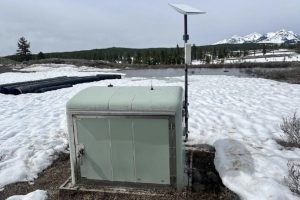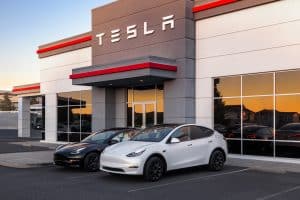Tesla is urging the Biden administration to adopt stricter heavy-duty emission limits than those that were proposed by the Environmental Protection Agency (EPA) back in April. While the EPA’s proposal outlined a path towards the electrification of the US’ heavy-duty transportation sector, Tesla has argued that the agency’s suggestions do not go far enough.
Tesla reportedly noted that the emission limits for heavy-duty trucks should be as stringent as the truck emissions regulations of California. The EV maker also called for the elimination of credits that would make it easier for truckmakers to comply with emissions regulations. Without tighter standards, the company stated that the rule would “not meet the legal benchmark of the Clean Air Act to protect the nation’s public health and welfare.”
As per the EPA’s proposal, 50% of new vocational vehicles, such as garbage trucks and buses, could be EVs by 2032. The proposal also suggested that 35% of new short-haul freight tractors and 25% of new long-haul freight tractors could be electric at the same time timeframe. Medium-duty vehicle rules are also expected to cut emissions by 44% over 2026 requirements, as noted in a Reuters report.
As part of its comments, Tesla pointed to its own Class 8 all-electric truck, the Semi, which started customer deliveries last December. The Semi is only being produced in small numbers today, but its real-world performance seems promising. Tesla noted that it is expected to hit a production rate of about 50,000 Semis per year. Significant volumes of the all-electric truck are also expected starting around late 2024, the EV maker stated.
Tesla also reportedly submitted the Semi’s production plans through 2030 to the EPA. The plans, however, were not made public. “Reaching the 50,000 annual production level would amount to 20% of all annual sales in (model year) 2027. This means Tesla’s production goal alone would far exceed the 5% EV sales deployment EPA anticipates in 2027,” Tesla wrote.
Tesla’s stance is understandable considering the presence of the Semi in its lineup of vehicles. Tesla is also the undisputed leader in EVs in the United States, so an aggressive shift towards electric mobility in the heavy-duty sector would be beneficial for the company. Interestingly enough, industry group American Trucking Associations has adopted the complete opposite stance as Tesla. The group argued that the EPA’s proposal is simply too aggressive, and it also “relies on technology that is at early-stage and lacks the real-world demonstrated maturity compared to proven internal combustion engine vehicle (ICEV) technologies.”





